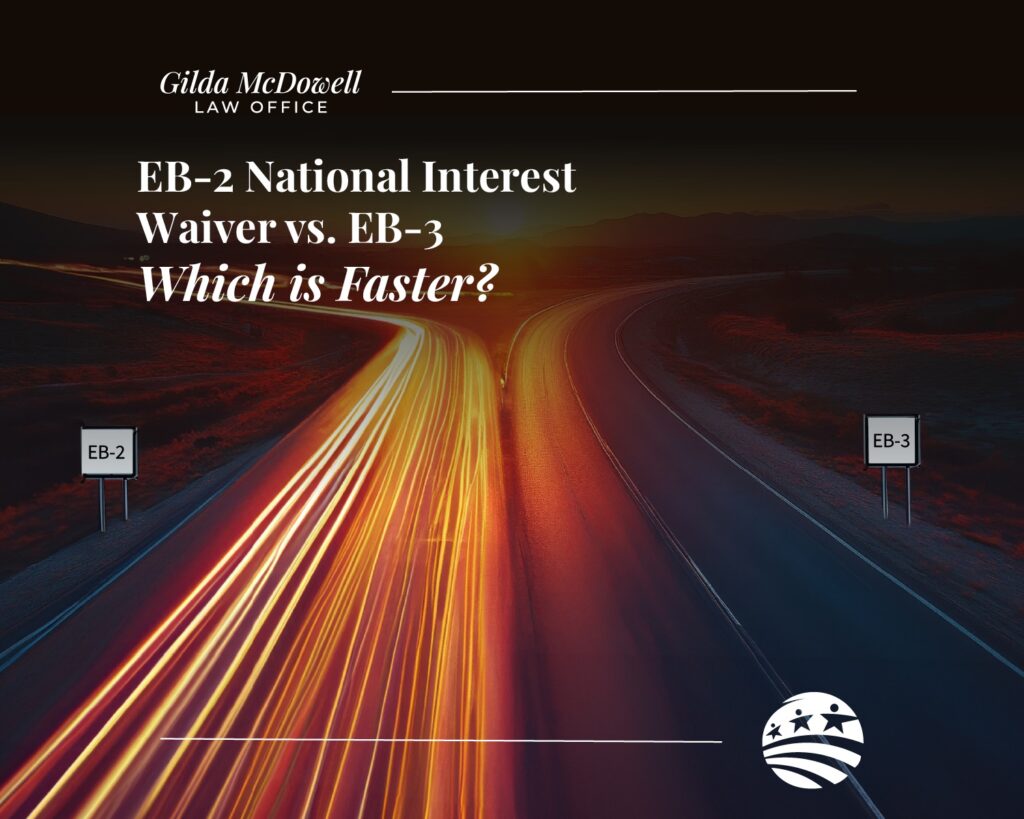You’re Qualified. You’re Ready. So Why Is Your EB-2 Still Stuck?
You’ve worked hard to build a successful career — maybe even earned an advanced degree, published research, or launched an innovative company. Applying for an EB-2 Green Card should be a turning point: a faster route to permanent residency, career stability, and life in the United States.
But then… nothing.
No updates. No decision.
Just mounting anxiety, missed opportunities, and questions you can’t answer.
Delays in the EB-2 process; especially for applicants pursuing the National Interest Waiver (NIW) — can derail more than just your timeline. They can delay job offers, family plans, and legal peace of mind.
Let’s walk through the 7 most common mistakes that cause EB-2 applications to stall — and how you can avoid them from the start.
EB-2 National Interest Waiver vs. EB-3: Which One Gets Approved Faster?
Short answer? It depends — but understanding the difference between EB-2 and EB-3 can save you months of waiting.
What Is the EB-2 NIW?
The EB-2 National Interest Waiver is designed for:
- Advanced degree holders
- Professionals with exceptional ability
- Researchers and entrepreneurs
No employer sponsorship is required — and that’s a big deal. By skipping the PERM labor certification process, many EB-2 NIW applicants cut months off their wait time.
What About EB-3?
The EB-3 category requires employer sponsorship and a full labor market test to prove no qualified U.S. workers are available. It’s a slower path — and while it may be a fit for certain skilled workers or professionals, the processing time is often much longer than EB-2 NIW.
Pro Tip: If you qualify for both, the EB-2 NIW is almost always the faster, more flexible option.
(See USCIS’s visa bulletin for real-time priority date comparisons.)
7 Reasons Your EB-2 Green Card Might Be Delayed
Here’s where most applicants run into trouble:
1. Missing or Incomplete Documentation
Even a single missing transcript, letter of recommendation, or translation can cause a Request for Evidence (RFE) — and that could delay your case for months.
2. Weak or Generic Letters of Support
Letters must clearly show how your work benefits the U.S., not just that you’re talented. Generic praise won’t cut it, especially in NIW cases.
3. Poorly Written Personal Statement
Your personal statement is your chance to tie everything together. If it doesn’t show a clear national interest benefit, your application could stall or be denied.
4. Choosing EB-3 When You Qualify for EB-2
Some applicants unknowingly apply through EB-3, thinking it’s simpler. But for advanced-degree holders or researchers, that decision can add months or years to your wait time.
5. Incorrect Priority Date Calculations
Misunderstanding your visa bulletin category or country-specific backlog can result in filing too early (or too late), leading to processing errors.
6. Not Working With a Qualified Immigration Attorney
DIY application, or hiring someone unfamiliar with NIW nuances, often lead to incomplete filings, missed deadlines, or weak arguments.
7. Delays in FOIA or Background Checks
Some delays aren’t your fault — but you can prepare. If you’ve lived in multiple countries, served in the military, or changed employers, your background checks may take longer than average.
How Do I Avoid Delays in My EB-2 Green Card Application?
✅ Hire an experienced immigration attorney who specializes in EB-2 and NIW
✅ Use a personalized, evidence-heavy approach in your petition
✅ Triple-check all documentation before submitting
✅ Don’t rush — but don’t wait too long, either
✅ Make sure you’re filing under the correct visa category
Frequently Asked Questions About EB-2 Green Card Delays
What’s the average EB-2 NIW processing time in 2025?
USCIS currently estimates 10–15 months for I-140 petitions filed under NIW, depending on your service center and country of birth. Premium processing is not available for NIW.
Can I switch from EB-3 to EB-2 if I already filed?
Sometimes — if your qualifications and job description support EB-2, you may be able to refile or “upgrade” your petition.
What is a Request for Evidence (RFE) and how does it impact timing?
An RFE is a USCIS request for additional proof. Responding quickly and thoroughly can help minimize delays, but expect an added 1–3 months.
Does using an immigration consultant (not an attorney) affect processing?
Yes, and not in a good way. Non-lawyers cannot provide legal advice. Filing through a consultant often leads to denials or unnecessary setbacks.
What if I already received a denial? Can I appeal or reapply?
Yes. You may be able to file a Motion to Reopen, appeal to the Administrative Appeals Office (AAO), or submit a new, stronger application.
Don’t Let Bureaucracy Derail Your Future in the U.S.
You’ve come too far to let a missed form or weak strategy block your path.
Let us help you get it right the first time.
✅ Schedule a EB-2 case consultation today
✅ Get step-by-step guidance from experienced immigration attorneys
✅ Avoid costly delays and build the future you deserve

